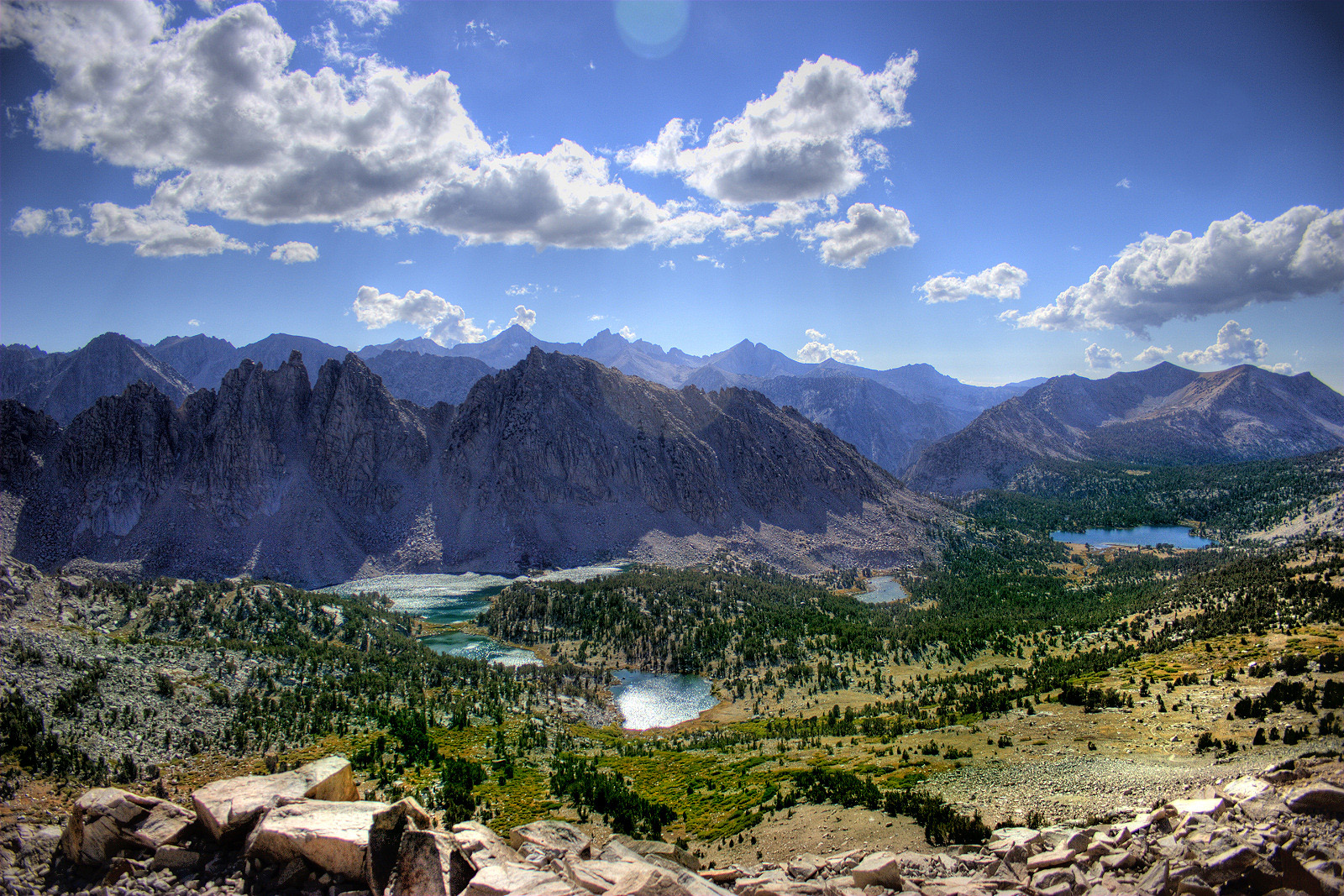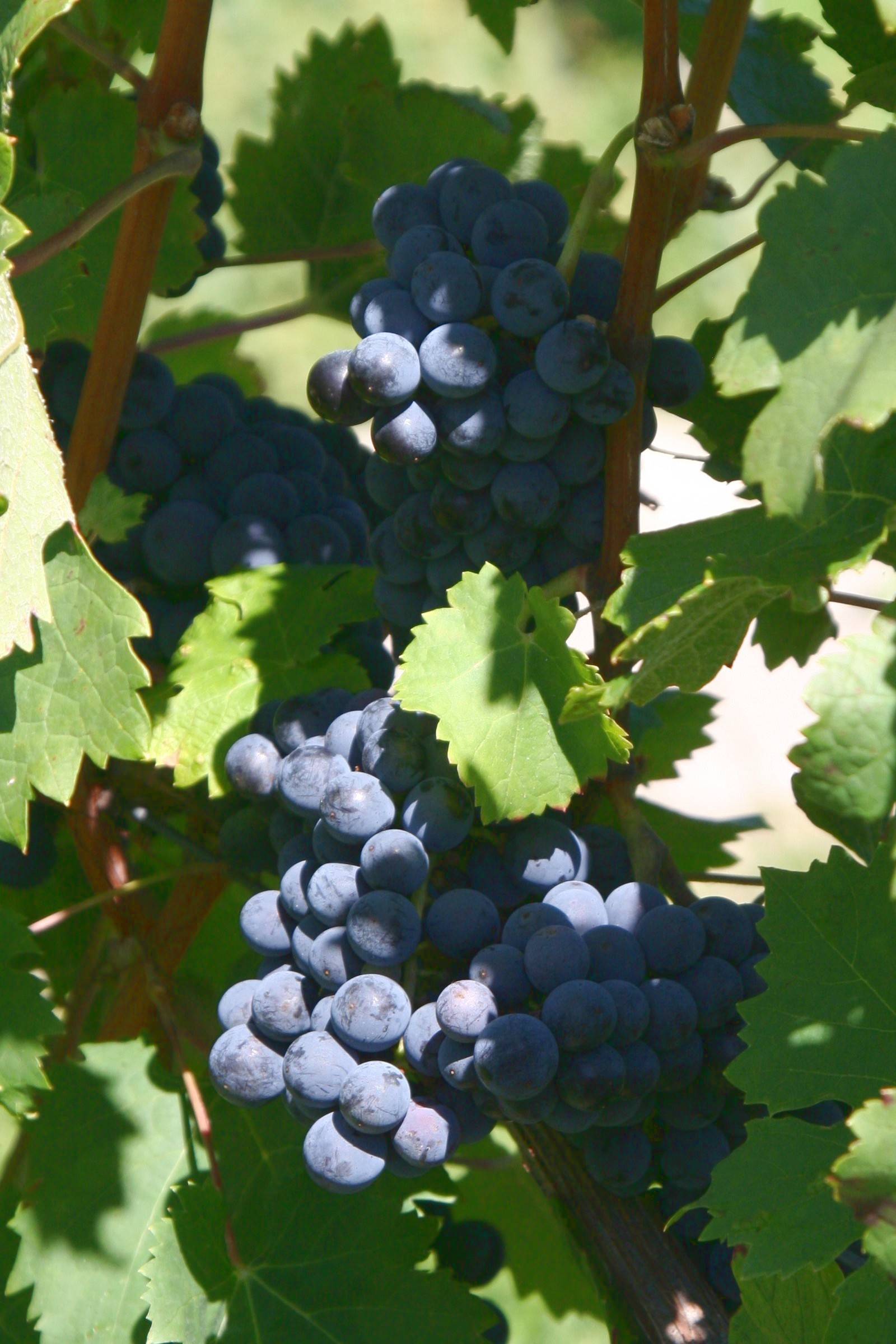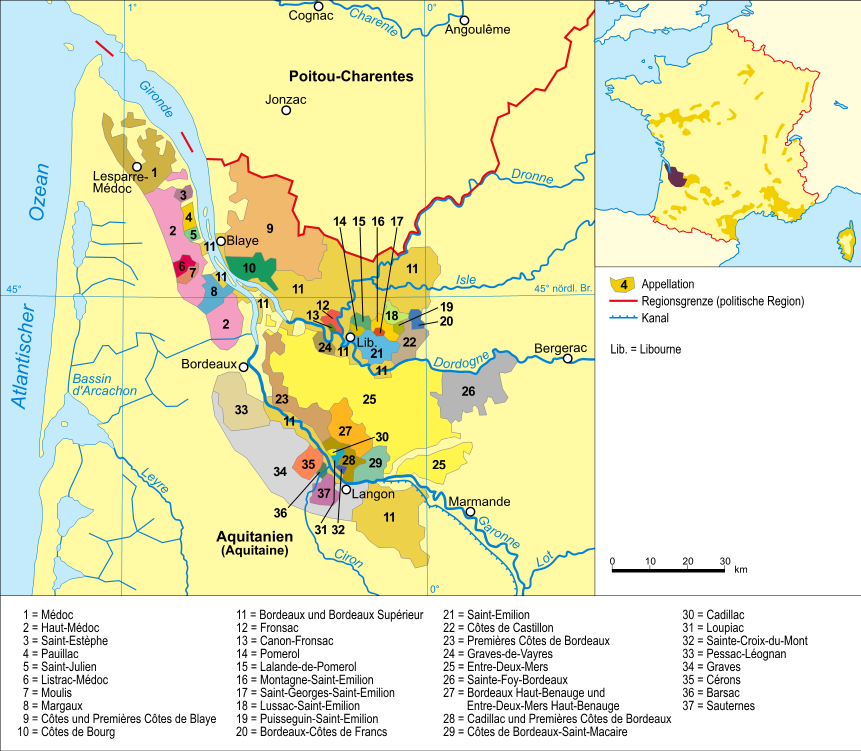|
Fiddletown AVA
Fiddletown is an American Viticultural Area (AVA) in Amador County, California, United States. The area was established on November 3, 1983 by the Bureau of Alcohol, Tobacco and Firearms (ATF), Treasury after reviewing the petition submitted from the Fiddletown Wine Grape Growers in Amador County to establish a viticultural area to be known as "Fiddletown." The region was first settled in 1849, during the California Gold Rush. Settlers who stayed in the area eventually planted grape vines, which became abundant by the end of the nineteenth century. Most of the vineyards in the Fiddletown AVA are located in the south and west portion of the region on Sierra Nevada slopes between above sea level. About 20% of the wine produced in Amador County comes from Fiddletown viticultural area. Modern History Fiddletown viticultural area is considered the upper Amador wine growing region, as it sits at higher elevation to both the Shenandoah Valley AVA, anchored by the towns of Plymouth ... [...More Info...] [...Related Items...] OR: [Wikipedia] [Google] [Baidu] |
American Viticultural Area
An American Viticultural Area (AVA) is a designated wine grape-growing region in the United States, providing an official appellation for the mutual benefit of winery, wineries and consumers. Winemakers frequently want their consumers to know about the geographic pedigree of their wines, as wines from a particular area can possess distinctive characteristics. Consumers often seek out wines from specific AVAs, and certain wines of particular pedigrees can claim premium prices and loyal customers. If a wine is labeled with an AVA, at least 85% of the grapes that make up the wine must have been grown in the AVA, and the wine must be fully finished within the U.S. state, state where the AVA is located. Regulations Since 1980, the boundaries of AVAs were defined by the Bureau of Alcohol, Tobacco and Firearms , Bureau of Alcohol, Tobacco and Firearms (ATF), an independent bureau within the United States Department of the Treasury that received and handled petitions for viticultural ar ... [...More Info...] [...Related Items...] OR: [Wikipedia] [Google] [Baidu] |
Sierra Nevada
The Sierra Nevada ( ) is a mountain range in the Western United States, between the Central Valley of California and the Great Basin. The vast majority of the range lies in the state of California, although the Carson Range spur lies primarily in Nevada. The Sierra Nevada is part of the American Cordillera, an almost continuous chain of mountain ranges that forms the western "backbone" of the Americas. The Sierra runs north-south, and its width ranges from to across east–west. Notable features include the General Sherman Tree, the largest tree in the world by volume; Lake Tahoe, the largest alpine lake in North America; Mount Whitney at , the highest point in the contiguous United States; and Yosemite Valley sculpted by glaciers from one-hundred-million-year-old granite, containing high waterfalls. The Sierra is home to three national parks, twenty-six wilderness areas, ten national forests, and two national monuments. These areas include Yosemite, Sequoia, and Ki ... [...More Info...] [...Related Items...] OR: [Wikipedia] [Google] [Baidu] |
Viognier
Viognier () is a white wine grape variety. It is the only permitted grape for the French wine Condrieu AOC, Condrieu in the Rhone Valley (wine), Rhône Valley.J. Robinson ''The Oxford Companion to Wine'', Third Edition, p. 754, Oxford University Press 2006 Outside of the Rhône, Viognier can be found in regions of North and South America as well as Australia, New Zealand, the Cape Winelands in South Africa, south Moravia region in Czechia, Israeli wine, Israel and in Austrian wine, Austria at Weingut Roland Minkowitsch. In some wine regions, the variety is co-fermented with the red wine grape Syrah where it can contribute to the color (wine), color and bouquet (wine), aroma of the wine.Wine & Spirits Education Trust ''Wine and Spirits: Understanding Wine Quality'' pp. 69, Second Revised Edition (2012), London, Like Chardonnay, Viognier has the potential to produce body (wine), full-bodied wines with a lush, soft character. In contrast to Chardonnay, the Viognier varietal h ... [...More Info...] [...Related Items...] OR: [Wikipedia] [Google] [Baidu] |
Cabernet Franc
Cabernet Franc is one of the major black grape varieties worldwide. It is principally grown for blending with Cabernet Sauvignon and Merlot in the Bordeaux (wine), Bordeaux style, but can also be vinified alone, as in the Loire (wine), Loire's Chinon wine, Chinon. In addition to being used in blends and produced as a varietal in Canada (wine), Canada, Lake Erie AVA, Lake Erie AVA in Pennsylvania, and across the United States (wine), United States and Argentina, it is sometimes made into ice wine in those regions. Cabernet Franc is lighter than Cabernet Sauvignon, making a bright pale red wine that contributes finesse and lends a Black pepper, peppery perfume to blends with more robust grapes. Depending on the growing region and style of wine, additional Aromas (wine), aromas can include tobacco, raspberry, bell pepper, Blackcurrant, cassis, and Viola (plant), violets. Records of Cabernet Franc in Bordeaux go back to the end of the 18th century, although it was planted in Loire ... [...More Info...] [...Related Items...] OR: [Wikipedia] [Google] [Baidu] |
Cabernet Sauvignon
Cabernet Sauvignon () is one of the world's most widely recognized red wine grape varieties. It is grown in nearly every major wine producing country among a diverse spectrum of climates from Australia and British Columbia, Canada to Lebanon's Beqaa Valley. This grape variety appeared in France in the 17th century as a result of natural crossbreeding. Its popularity is often attributed to its ease of cultivation—the grapes have thick skins and the vines are hardy and naturally low yielding, budding late to avoid frost and resistant to viticulture hazards. The classic profile of Cabernet Sauvignon tends to be full-bodied wines with high tannins and noticeable acidity that contributes to the wine's aging potential. In cool areas, it has flavors of blackcurrant and green pepper; in warmer places, it may taste like black cherry and olive; in very hot climates, it can have a jammy flavor. History and origins For many years, the origin of Cabernet Sauvignon was not cl ... [...More Info...] [...Related Items...] OR: [Wikipedia] [Google] [Baidu] |
Bordeaux Wine
Bordeaux wine (; ) is produced in the Bordeaux region of southwest France, around the city of Bordeaux, on the Garonne River. To the north of the city, the Dordogne River joins the Garonne forming the broad estuary called the Gironde; the Gironde department, with a total vineyard area of 110,800 hectares, is the second largest wine-growing area in France behind the Languedoc-Rousillon. Average vintages produce over 700 million bottles of wine, ranging from large quantities of daily table wine to some of the world's most expensive and prestigious wines. The vast majority of wine produced in Bordeaux is red (sometimes called "claret" in Britain), with sweet white wines (most notably Sauternes), dry whites, and (in much smaller quantities) rosé and sparkling wines ( Crémant de Bordeaux) collectively making up the remainder. Bordeaux wine is made by more than 5,660 producers or ''châteaux''. There are 65 appellations of Bordeaux wine. History Viticulture was introduce ... [...More Info...] [...Related Items...] OR: [Wikipedia] [Google] [Baidu] |
Nevada
Nevada ( ; ) is a landlocked state in the Western United States. It borders Oregon to the northwest, Idaho to the northeast, California to the west, Arizona to the southeast, and Utah to the east. Nevada is the seventh-most extensive, the 32nd-most populous, and the ninth-least densely populated U.S. state. Nearly three-quarters of Nevada's population live in Clark County, which contains the Las Vegas–Paradise metropolitan area, including three of the state's four largest incorporated cities. Nevada's capital is Carson City. Las Vegas is the largest city in the state. Nevada is officially known as the "Silver State" because of the importance of silver to its history and economy. It is also known as the "Battle Born State" because it achieved statehood during the Civil War (the words "Battle Born" also appear on its state flag); due to the presidency of Abraham Lincoln, the Union benefited immensely from the support of newly awarded statehood by the infusion of t ... [...More Info...] [...Related Items...] OR: [Wikipedia] [Google] [Baidu] |
Jug Wine
"Jug wine" is a term in the United States for inexpensive table wine typically bottled in a glass bottle or jug. Historically, jug wines were labeled semi-generically, often sold to third parties to be relabeled, or sold directly from the winery's tasting room to customers who would often bring their own bottles. For a period following Prohibition, jug wines were the only domestic wine available for most Americans. Beginning in the 1960s, when Americans began to consume more premium wine, jug wine took on a reputation for being "extreme value" (bargain-priced premium wine).Julia Flynn Siler: ''The House of Mondavi: The Rise and Fall of an American Wine Dynasty'', page 310. Gotham Books, 2007. Beginning in the late 1980s jug wines have increasingly been labeled varietally to meet consumer demand. Common brands Common brands include Gallo, Carlo Rossi, Almaden Vineyards, and Inglenook Winery. Typical formats include 750 ml and one liter glass bottles, as well as three a ... [...More Info...] [...Related Items...] OR: [Wikipedia] [Google] [Baidu] |
Ione, California
Ione ( ) is a city in Amador County, California. As of the 2020 United States census, 2020 census the population is 5,141, which is a 35.1% decrease from the 2010 United States census, 2010 census. Once known as "Bedbug" and "Freeze Out," Ione was an important supply center on the main road to the California Mother Lode, Mother Lode and Southern Mines during the California gold rush. History Ione is the historical home of the Plains and Sierra Miwok, Sierra Miwok Indians. In 1840, the future town site became part of the Ranchos of California, Mexican land grant Rancho Arroyo Seco (Yorba), Rancho Arroyo Seco in Alta California. The town is located in the fertile Ione Valley; it is believed to have been named by Thomas Brown around 1849 after one of the heroines in Edward Bulwer-Lyttons drama ''The Last Days of Pompeii'', but conflicting legends and sources for the name exist. During the days of the California gold rush, the miners knew the town by the names of "Bedbug" and "Free ... [...More Info...] [...Related Items...] OR: [Wikipedia] [Google] [Baidu] |
CA 49
State Route 49 (SR 49) is a north–south state highway in the U.S. state of California that passes through many historic mining communities of the 1849 California gold rush and it is known as the Golden Chain Highway. The road was initially lobbied in 1919 by the Mother Lode Highway Association, a group of locals and historians. The highway begins at State Route 41 in Oakhurst, Madera County, in the Sierra Nevada. It continues in a generally northwest direction, weaving through the communities of Goldside and Ahwahnee, before crossing into Mariposa County. State Route 49 then continues northward through the counties of Tuolumne, Calaveras, Amador, El Dorado, Placer, Nevada, Yuba, Sierra, and Plumas, where it reaches its northern terminus at State Route 70, in Vinton. Route description SR 49 starts at an intersection with SR 41 near Oakhurst. The road heads west before turning north before the town of Ahwahnee near the Wassama Roundhouse State Historic ... [...More Info...] [...Related Items...] OR: [Wikipedia] [Google] [Baidu] |
CA 16
State Route 16 (SR 16) is a state highway in the northern region of the U.S. state of California that runs from Route 20 in Colusa County to Route 49 just outside Plymouth in Amador County, primarily crossing the Sacramento Valley. Much of the route through the Sacramento area is unsigned as it runs on a concurrency with the I-5 and US 50 freeways. Route description SR 16 is part of the California Freeway and Expressway System, and the eastern segment is part of the National Highway System, a network of highways that are considered essential to the country's economy, defense, and mobility by the Federal Highway Administration. SR 16 is eligible to be included in the State Scenic Highway System, but it is not officially designated as a scenic highway by the California Department of Transportation. It is known as the Stanley L. Van Vleck Memorial Highway from Dillard Road in Sacramento County to the Amador County line, honoring a former prominent leader in the state's agric ... [...More Info...] [...Related Items...] OR: [Wikipedia] [Google] [Baidu] |
Sutter Creek, California
Sutter Creek (formerly spelled Sutter's Creek and Suttercreek; formerly named Suttersville) is a city in Amador County, California, United States. The population was 2,646 at the 2020 census, up from 2,501 at the 2010 census. It is accessible via California State Route 49, State Route 49. History The community takes its name from nearby Sutter Creek (California), Sutter Creek, which in turn has the name of early California developer John Sutter. Sutter's discovery of gold at nearby Coloma, California, Coloma in January 1848 triggered the California Gold Rush. After all his workers left him to go on their own hunts for gold, Sutter moved to Mormon Island, California, Mormon Island with a couple of hands. After about two weeks miners flooded the island, so Sutter and his hands left and returned to Sutter Creek. Sutter said: "I broke up the camp and started on the march further south, and located my next camp on Sutter Creek, now in Amador County, and thought that I should be th ... [...More Info...] [...Related Items...] OR: [Wikipedia] [Google] [Baidu] |






